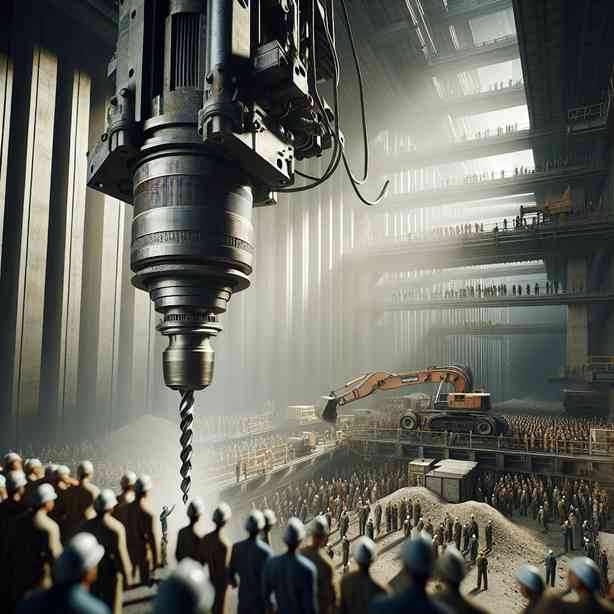
The sound that a drill makes just before it starts is often characterized by a brief yet distinctive noise, one that is both mechanical and anticipatory. This sound serves as a precursor to the action that is about to unfold, creating a sense of expectation in the listener. Understanding this sound can provide insights into the intricate workings of drilling machines, their applications, and the essential role they play across various industries.
Drills have been an integral part of human innovation for centuries, evolving from simple hand tools to sophisticated machines that power industries. The sound emitted by a drill just before it begins functioning is a product of the engine or motor gearing up, often accompanied by electrical currents being directed towards its components. This preliminary noise serves several purposes—it alerts users to the imminent activation of the drill and signifies that the machine is ready for operation.
From an engineering perspective, this sound is not just random noise; it is a critical part of the operational cycle. The vibrations and acoustics generated provide feedback, allowing the user to gauge the tool’s readiness. Higher-frequency sounds often indicate that the drill’s motor is operating efficiently, while lower-frequency sounds might suggest mechanical burdens or resistance that could require troubleshooting. Understanding these nuances can enhance maintenance practices and prolong the life of the machinery.
Moreover, drills are not only essential for construction and manufacturing but also play a pivotal role in medical fields. Dental drills, for example, produce a similar sound that patients might find intimidating. The noise serves as a reminder of the procedure’s nature but is also engineered to deliver efficiency and precision. Understanding this aspect can help practitioners address patient anxieties, highlighting the importance of sound in both mechanical and medical environments.
In the construction industry, various types of drills—such as rotary, hammer, and impact drills—each produce their own characteristic sounds. These differences are based on the preferred mechanisms and designs tailored for specific applications. The sound of a hammer drill, for example, is not merely an auditory cue. It signifies the gizmos inside are engaging in a back-and-forth movement, effectively breaking through hard surfaces like concrete. Therefore, the sound itself can also serve as a diagnostic tool for skilled operators, informing them whether the drill is functioning optimally or if maintenance is required.
This intricate relationship between sound and function extends beyond the mechanical aspect. In manufacturing settings, the auditory environment plays a vital role in ensuring safety and operational efficiency. Workers often rely on auditory cues, not only from drills but from all machinery, to maintain a safe working environment. A sudden change in the sound profile can alert personnel to malfunctions or potential hazards, emphasizing the critical nature of being attuned to these environmental cues.
Beyond functional implications, the contexts in which these sounds are heard can evoke emotional responses. The whirring of drills might inspire feelings of productivity and progress in construction workers but can also elicit anxiety in patients waiting for dental procedures. This emotional aspect reinforces the need for practitioners and managers across various fields to be sensitive to the psychological impact of machinery sounds.
Furthermore, as technology continues to develop, innovations within the drilling industry are leading to quieter and more efficient models. Advances in sound-dampening technology and the design of electric drills are making it possible to reduce the level of noise generated during operation. This shift doesn’t just make for a more pleasant auditory environment; it also has implications for worker health. Prolonged exposure to high noise levels can lead to hearing loss and increased stress levels, so quieter models contribute positively to occupational health and safety.
In conclusion, the sound that a drill makes just before it starts is a multifaceted phenomenon. It is a precursor that encapsulates readiness, efficiency, and safety, serving as a communication tool between machines and their operators. By becoming more aware of this sound and its implications, workers can improve their operational practices, and industries can enhance their overall safety protocols and productivity measures. Understanding these auditory cues can enrich one’s appreciation of drills’ roles in various sectors, emphasizing the interconnectedness of sound, function, and emotional response in our modern industrial landscape.


